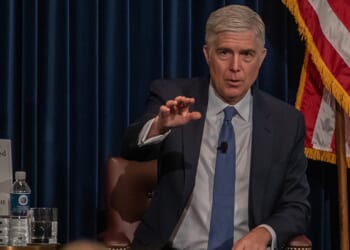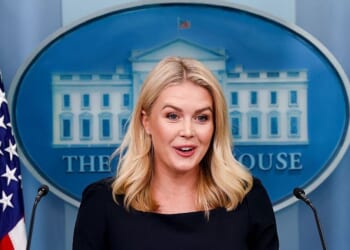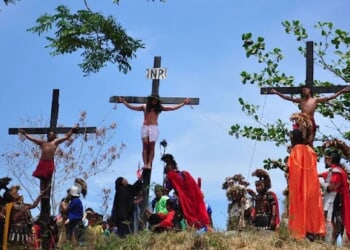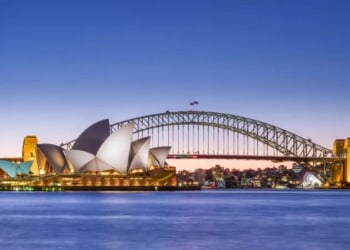Europe is stepping in not as a replacement but as an additional partner to the region—one that offers access to markets, investments, sustainable technologies, and geopolitical balance.
For much of the post-Soviet era, Central Asia has not figured prominently in the strategic calculus of the European Union (EU). Hemmed in by powerful neighbors and long seen as a distant periphery, the region’s role in EU foreign policy was limited to developmental assistance, energy cooperation, and human rights advocacy. That perception is changing rapidly.
On April 4, the inaugural EU-Central Asia Summit in Samarkand, Uzbekistan, signaled the arrival of a new chapter. The meeting brought together top EU leaders—European Council President António Costa and European Commission President Ursula von der Leyen—with the presidents of Kazakhstan, Kyrgyzstan, Tajikistan, Turkmenistan, and Uzbekistan. For the first time, leaders met in a formal summit format to chart a course for long-term strategic partnership.
Given the geopolitical challenges and changes across the world, the stakes are high, and the EU’s interest is serious.
Speaking about this event, von der Leyen captured the tone of the new engagement: “In these uncertain times, Europe stands for openness and engagement. For Europe, Central Asia is a partner of choice.”
A Strategic Region
The European Union increasingly views Central Asia as a strategically important region. The EU’s primary objective is to deepen its trade and investment links with the five Central Asian states. Beyond economics, the EU sees Central Asia as a key security partner, particularly due to its proximity to Afghanistan and its role in containing extremism across its mostly Muslim-majority populations. For example, Kazakhstan’s humanitarian aid and efforts to maintain trade routes with Afghanistan have won Brussels’ recognition. In a joint declaration released after the summit, the sides “expressed common concern over the humanitarian situation in Afghanistan and recognized the need to continue supporting the people of Afghanistan.”
Among the five Central Asian nations, Kazakhstan stands out as the EU’s foremost partner. In 2024, bilateral trade between the EU and Kazakhstan hit a record $50 billion, with EU investments exceeding $200 billion. Kazakhstan accounts for 80 percent of the EU’s trade with Central Asia and more than 40 percent of total European FDI into the region.
Speaking at the summit, Kazakh President Kassym-Jomart Tokayev stated Kazakhstan’s readiness to increase exports to the EU across 175 commodity categories worth over $2 billion. He also highlighted Kazakhstan’s ambition to become a key transit hub linking East and West, a key pillar of EU-Central Asia engagement.
Connectivity and the Middle Corridor
Nowhere is the EU-Central Asia alignment more evident than in connectivity. This area has taken on outsized importance in the wake of the war in Ukraine and the breakdown of EU-Russia transit routes. With trade routes through Russia now politically and logistically fraught, the EU has turned toward the Trans-Caspian International Transport Route (TITR), also known as the Middle Corridor.
This corridor runs through Central Asia, across the Caspian Sea, and into the South Caucasus and Europe. The EU has designated it the most optimal, fastest, and competitive route for integrating continental supply chains—and Kazakhstan is its linchpin. Container traffic on the TITR increased by 63 percent in 2024, reaching 4.1 million tons. The goal is to reach 10 million tons by 2027.
As part of its €300-billion Global Gateway initiative, the EU is prioritizing the modernization of this corridor, which could eventually increase the number of containers arriving in Europe from Central Asia from under 100,000 to over 800,000 annually. The Middle Corridor can cut transport time between China and Europe to just ten to fifteen days.
A Critical Minerals Pivot
Central Asia’s vast deposits of critical raw materials are also drawing EU attention. With China currently dominating global supply chains—controlling a wide share of the production and processing of critical minerals—the EU is urgently looking for alternative sources.
Central Asia holds significant deposits of critical minerals, including 38.6 percent of the world’s manganese ore, 30 percent of chromium, 20 percent of lead, 12.6 percent of zinc, and 8.7 percent of titanium. In particular, Kazakhstan already produces nineteen of the EU’s thirty-four critical raw materials, and plans are in place to expand that to twenty-one.
At the summit, the sides agreed that enhanced cooperation on critical raw materials is of strategic importance, with von der Leyen stating that “these raw materials are the lifeblood of the future global economy.” Meanwhile, President Tokayev proposed establishing a “Regional Research Centre for Rare Earth Metals” in Astana to serve as a hub for investors and enterprises seeking data on deposits and technologies. Meanwhile, Uzbekistan is also rich in silver, molybdenum, titanium, and gold. These resources are vital for Europe’s green transition and digital economy.
On the eve of the summit, Kazakhstan announced the discovery of 20 million metric tons of rare earth metals, including neodymium, cerium, lanthanum, and yttrium. If confirmed, this would position Kazakhstan as the world’s third-largest holder of rare earth reserves—behind only China and Brazil. These minerals are key to the production of car batteries, wind turbines, and medical devices.
Essentially, the EU aims to reduce its reliance on China and diversify the supply of critical minerals. Establishing supply chains through the Middle Corridor would create a win-win situation for all parties involved. In this area, further progress and discussions are expected at the Astana International Forum in May.
Sustainable Development and Green Goals
Beyond raw materials and logistics, sustainability is an increasingly central theme in EU-Central Asia cooperation. The region is one of the most climate-vulnerable in the world. Over the past sixty years, Central Asia’s average temperature has risen by 1.5°C, more than twice the global average.
The effects are already being felt. Water scarcity is on the rise, and with the population expected to reach 100 million by 2050, pressure on irrigation and resource management will intensify.
In response, Uzbekistan’s 2030 development strategy has prioritized climate resilience. The country is rolling out green hydrogen clusters, solar and wind hubs, and electric vehicle production. Kazakhstan, meanwhile, is pushing toward carbon neutrality by 2060, with 148 renewable energy facilities generating nearly 3,000 MW of clean power. The country’s targets include 10 percent renewable energy by 2030 and 50 percent by 2050.
Earlier this year, the UN General Assembly unanimously adopted a resolution on the establishment of the UN Regional Center for Sustainable Development Goals (SDGs) for Central Asia and Afghanistan in Almaty, which the EU supported. Kazakhstan is also spearheading plans for a UN-backed Regional Climate Conference in 2026.
As Europe moves to decarbonize its economy, stable access to clean energy sources becomes paramount. Investing in Central Asia’s sustainability helps the EU mitigate the global impacts of climate change, reduce environmental migration pressures, and ensure that its future energy and industrial partners are aligned with EU green standards. Supporting the region’s green transition also reinforces the EU’s broader ambition to position itself as a global leader in sustainable development and climate diplomacy.
A Multipolar Opening
Given the geopolitical realities and rivalries, the EU would welcome the opportunity to push aside Russia’s and China’s influence in Central Asia. However, despite all the progress in EU-Central Asia relations, the EU is unlikely to displace either China or Russia in the region anytime soon. Both powers remain deeply entrenched—China as a dominant investor and trade partner, Russia as a security actor and cultural force. Still, the Samarkand Summit illustrates that the EU is serious about long-term engagement.
For Central Asia, this means choice. The region is no longer merely caught between two major powers. Europe is stepping in not as a replacement but as an additional partner—one that offers access to markets, investments, sustainable technologies, and geopolitical balance.
For the EU, beyond raw materials and trade routes, Central Asia represents a strategic region that, in a world of growing fragmentation, will only grow in importance.
About the Author: Michael Rossi
Michael Rossi is a Lecturer in Political Science at Rutgers University of New Jersey, United States, and a Visiting Professor at Webster University Tashkent.
Image: Vladimir Tretyakov / Shutterstock.com.
















